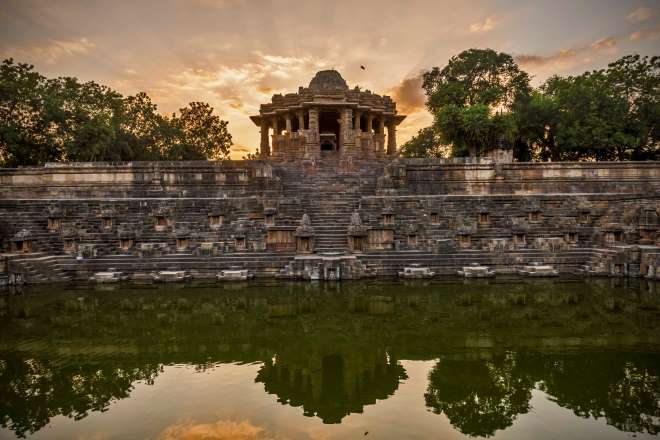PM Modi on Twitter: PM Modi shared video of Modhera’s Sun Temple during rains! Prime Minister Narendra Modi on Wednesday took to his personal Twitter handle to share a video of the Sun Temple in Gujarat’s Modhera during a rainy day. The video was captioned, “Modhera’s iconic Sun Temple looks splendid on a rainy day!” The Sun Temple is lined with steps leading down to the base of the ‘kund’. In the video the PM shared, as the rain beats down, the steps turn the temple into a magnificent collection of several little waterfalls.
Modhera’s iconic Sun Temple looks splendid on a rainy day ????!
Have a look. pic.twitter.com/yYWKRIwlIe
— Narendra Modi (@narendramodi) August 26, 2020
The Sun Temple is a historical legacy that dates back to the Solanki rule, according to the website of Gujarat Tourism, and it rests against the backdrop of River Pushpavati. The temple reflects the masonry that marked the Solanki rule, with the remains of the temple complex being lined with intricate carvings. Apart from that, the kund showcases the sculpting expertise that marked the ‘Golden Age of Gujarat’. The temple is located a mere 35 kms away from Mehsana, and falls on the way to the temples of Goddess Bahucharaji.
The ‘kund’, known as the Ramakund, is the first feature of the historic temple that comes to the notice of the visitor upon entering the complex. It is rectangular in shape and contains as many as 108 shrines for various Gods as well as Demi-Gods. On one side of the kund is the temple dedicated to the Sun. Three main shrines are located on the other three sides of the Ramakund, and these are dedicated to Lord Ganesh, Lord Vishnu and Lord Shiva dancing the ‘tandav’ while facing the temple. Apart from that, the steps are also arrayed with various shrines in different ‘mudras’ or poses.
The temple section of the remains has 52 pillars which are carved with tales from legends and epics. The resident purohit of the temple often narrates and explains these tales upon the request of the tourists. These carvings display lessons on morality, the history of communities and describe the rituals, festivals and fairs that marked the Golden Age.
Legends state that after returning from his battle with Ravana, Lord Rama and Goddess Sita halted here and Lord Rama conducted a yajna here for cleansing himself of the sin of killing Ravana, who was a devout Shivaite. The temple is one of the key attractions in the vibrant state of Gujarat and is stated to have been built in 1027 AD. However, after the decline of the Solanki rule and a decreased worship of the Sun God, and the subsequent invasions and natural disasters damaged and defaced this temple, with the main ‘shikara’ of the temple collapsing due to an explosion that was set off by the soldiers of subsequent rulers.


